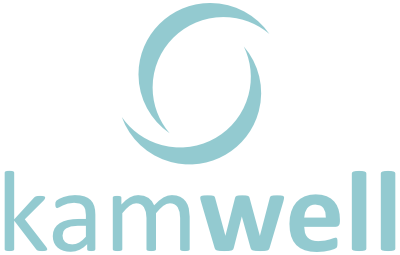
- BLOG
- Kamwell
The evolving workplace wellbeing trends and predictions for the future of work
Here we are, one+ year on since lockdown began when our lives were transformed in ways we could never have imagined. But, as restrictions start to ease and workplaces slowly begin to re-open, how will the future of work look in a society where Covid-19 and employee wellbeing co-exist? What trends can we expect to see? Here’s a few of our thoughts on what might emerge:
Personalised working schedules:
The pandemic has helped companies overcome an obstacle which previously hindered a flexible approach to work: trust. Over the course of the past year, employees have demonstrated their ability to be productive even in the face of challenging and differing conditions. As organisations start to consider how they transition into the new normal, it is important that they go on to consider and honour the diversity of schedule requirements.
Are you a social animal who thrives on regular human interaction in the office or do you crave a more solitary environment at home? Perhaps you’re an early riser, or even a night owl?
In short, personalisation makes a difference. In fact, according to a survey by the Society of Human Resource Management, “personalisation and control over our work and environment are shown to be key drivers of positive mental health and wellbeing.”
The new office environment:
We are already seeing a rise in organisations that are not renewing their office leases, consolidating office locations or doing away with the bricks and mortar altogether. Many organisations are still undecided about what to do and, as such, are consulting their staff through ‘future of work’ programmes to understand how employees want to work in a post-Covid era and what changes and accomodations they will need to make – from contracts, policies and office design.
When the pandemic hit us last year, we could forsee a new world in which offices would undergo a big change in layout. Out will go the static desks and traditional office design, to be replaced with a swathe of large meeting rooms – large enough that people can social distance and feel safe being in the office, but functional enough that people can return to the office when they need to collaborate with colleagues where it’s easier to be together.
Real understanding for the importance of psychological safety:
In April last year, the Office of National Statistics revealed that 46.9% of adults were suffering from high anxiety due to the crisis. Beyond this, employees have undoubtedly experienced a myriad of emotions from frustration to depression, hopelessness to panic. Whether you have suffered from mental health issues before or not, it can be a lonely and frightening place.
This is perhaps why there is an uptick of training in mental health awareness for managers. One element of this is psychologically safety – an emerging concept that became mainstream in the workplace wellbeing dictionary last year. It involves creating a non-judgmental culture to ensure employees feel that they can be authentic and vulnerable in the workplace. In turn, this not only increases their sense of self-worth, but also has a positive impact on the learning process, which allows them to achieve optimal development.
Senior leaders can foster this culture by demonstrating engagement with employees during discussions, being inclusive in interpersonal settings or modelling honesty and vulnerability. The bottom line is that the pandemic has accelerated the mental health agenda, and psychological safety will be imperative in this journey.
A new union with relational intelligence:
The pandemic has thrust all our relationships under a microscope. Our working life is interwoven with threads of personal and workplace relationships, which can be highly problematic if we lack the tools to navigate relational issues. These problems can include loneliness, conflict with colleagues and tension with our family members. In their latest report, Soulmates Academy revealed that for 42% of high earners, problems in personal relationships resulted in poor work performance.
Commenting on the power of relationships, psychologist Carl Jung notes: “The meeting of two personalities is like the contact of two chemical substances: if there is any reaction, both are transformed.” Therefore, educating employees about relational intelligence lends a much-needed sensitivity to the complexity of the human condition. The fusion between workplace wellbeing and human connection has great potential and it now seems to be on the horizon.
Equal benefits for all family situations:
Addressing inclusion and diversity in the workplace is in big demand, which will perhaps also spark a review of benefits policies that currently exclude ‘non-traditional’ family set-ups. By way of example, this may include:
- People with blended families
- Single parents
- Members of the LGBTQ or Transgender community
- Adoptive and foster parents
- People caring for elderly parents or extended family
Dods Diversity and Inclusion have touched on some solutions to develop a family-friendly workplace:
- Tailoring bespoke programmes to facilitate a return to work
- Championing senior male staff who share childcare responsibilities
- Ensuring family-friendly provisions are accessible and relevant for alternative families
Female empowerment programmes:
Female-centered workplace wellbeing initiatives are on the up. We loved working with BT on their award-winning TechWomen Programme to help their female technologists reach their potential and we are enjoying working with Capgemini to promote greater balance, wellbeing and leadership across their female teams (men are also invited to initiatives). These programmes are pivotal to support women to build the confidence to lead with energy and presence.
Another great example can be found in the STEM sector, which is encouraging women and girls to pursue traditionally male-dominated career paths. WISE (Women into Science and Engineering) is one such programme seeking to “increase the participation, contribution and success of women in the field of science, technology, maths and engineering”. Schemes like this are gaining traction, paving the way for other industries to follow suit.
But female workplace wellbeing goes beyond increasing the talent pool of certain industries and facilitating women to achieve positions in senior roles. It is also about walking side by side with women as they embark on each life stage from maternity to menopause, and we can’t wait to see a rise in this support to the brilliant working women of the world.
Immunity boosting initiatives:
Immunity (noun \ɪˈmjuːnɪti\) A word that’s become an intrinsic part of our 2021 vocabulary, and consequently we have seen a surge of immunity boosting advice being incorporated into workplace wellbeing, and it is continuing to grow.
Writing for Brand Equity, Dr Sandeep Goyal observes that “building immunity will be the new mantra” in the fight against Covid-19 and other diseases in the future. Perhaps companies will offer even more sessions on stress management, personalised nutrition or guidance on supplements to help the workforce remain healthy and resist infection.
All in all, one thing is clear, wellbeing in all its forms will remain a forefront focal point to ensuring a smooth transition into the future of work and whatever awaits us next!
Published: 24th June 2021
